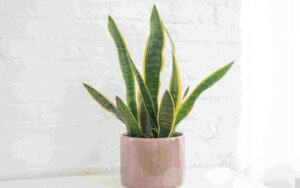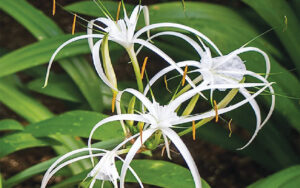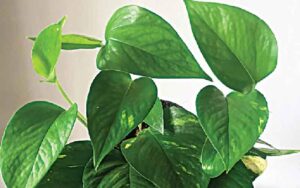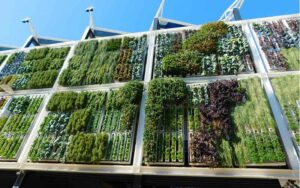NASA plants: Decorate your home with these best air-cleaning plants
New Delhi: The best air purifying plants according to NASA include – English ivy (Hedera helix), Spider plant (Chlorophytum elatum), Devil’s ivy, Pothos plant (Epipremnum aureum), Peace lily (Spathiphyllum ‘Mauna Loa’).
Hedera helix, the common ivy, English ivy, European ivy, or just ivy, is a species of flowering plant of the ivy genus in the family Araliaceae, native to most of Europe and western Asia. A rampant, clinging evergreen vine, it is a familiar sight in gardens, waste spaces, and wild areas, where it grows on walls, fences, tree trunks, etc. across its native and introduced habitats. As a result of its hardy nature, and its tendency to grow readily without human assistance, ivy attained popularity as an ornamental plant, but escaped plants have become naturalised outside its native range and grow unchecked in myriad wild and cultivated areas.
Read More: Third Indian Horticulture Summit-cum-Int’l Conference to be held at Jaipur from 1st Feb
Chlorophytum comosum, usually called spider plant or common spider plant due to its spider-like look, also known as spider ivy, ribbon plant (a name it shares with Dracaena sanderiana), and hen and chickens is a species of evergreen perennial flowering plant of the family Asparagaceae. It is native to tropical and Southern Africa but has become naturalized in other parts of the world, including Western Australia and Bangladesh. It is easy to grow as a houseplant because of its resilience, but it can be sensitive to the fluoride in tap water, which commonly gives it ‘burnt tips’. Variegated forms are the most popular.
Air purification: The NASA Clean Air Study suggested that air plants were effective at removing common household air toxins formaldehyde and xylene; however, these results are not applicable to typical buildings, where outdoor-to-indoor air exchange already removes VOCs at a rate that could only be matched by the placement of 10–1000 plants/m2 of a building’s floor space.
While the plant’s ability to take up VOCs is well documented in laboratory studies, the effect of plants on indoor air in complex environments like offices requires further investigations to clarify the full capacity of plants in real-life settings. In the laboratory settings uses in the Clean Air Study, spider plants were shown to reduce formaldehyde pollution, and approximately 70 plants would neutralize the formaldehyde released by materials in a representative (c. 167 m2 [1,800 sq ft]) energy-efficient house, assuming each plant occupies a 3.8 L (0.84 imp gal; 1.0 US gal) pot.
Read More: Bonsai Technique: An exclusive sector in the landscape gardening industry
Epipremnum aureum is a species in the arum family Araceae, native to Mo’orea in the Society Islands of French Polynesia. The species is a popular houseplant in temperate regions but has also become naturalised in tropical and sub-tropical forests worldwide, including northern South Africa, Australia, Southeast Asia, South Asia, the Pacific Islands and the West Indies, where it has caused severe ecological damage in some cases.
The plant has a number of common names including golden pothos, Ceylon creeper, hunter’s robe, ivy arum, house plant, silver vine, Solomon Islands ivy, and taro vine. It is also called devil’s vine or devil’s ivy because it is almost impossible to kill and it stays green even when kept in the dark. It is sometimes mistakenly labeled as a Philodendron, Pothos or Scindapsus in plant stores. It is commonly known as a money plant in many parts of the Indian subcontinent. It is often used in decorative displays in shopping centers, offices, and other public locations largely because it requires little care and is also attractively leafy. In tropical countries, it is found in many parks and gardens, and tends to grow naturally.
The best results are achieved by providing indirect light; it tolerates an intense luminosity, but long periods of direct sunlight burn the leaves. It lives well with a temperature between 17 and 30 °C (63 and 86 °F). Generally, the plant will only need watering when the soil feels dry to the touch (typically once every one to two weeks). A liquid fertilizer can be added in the spring and it must be replanted every two years, or when it becomes too rootbound. However, it is a very robust plant, and will survive bad growing conditions. The plant grows rapidly in hydroponic culture.
Read More: Air Pollution? No worries…this plant can transform carbon dioxide into oxygen even at night

















